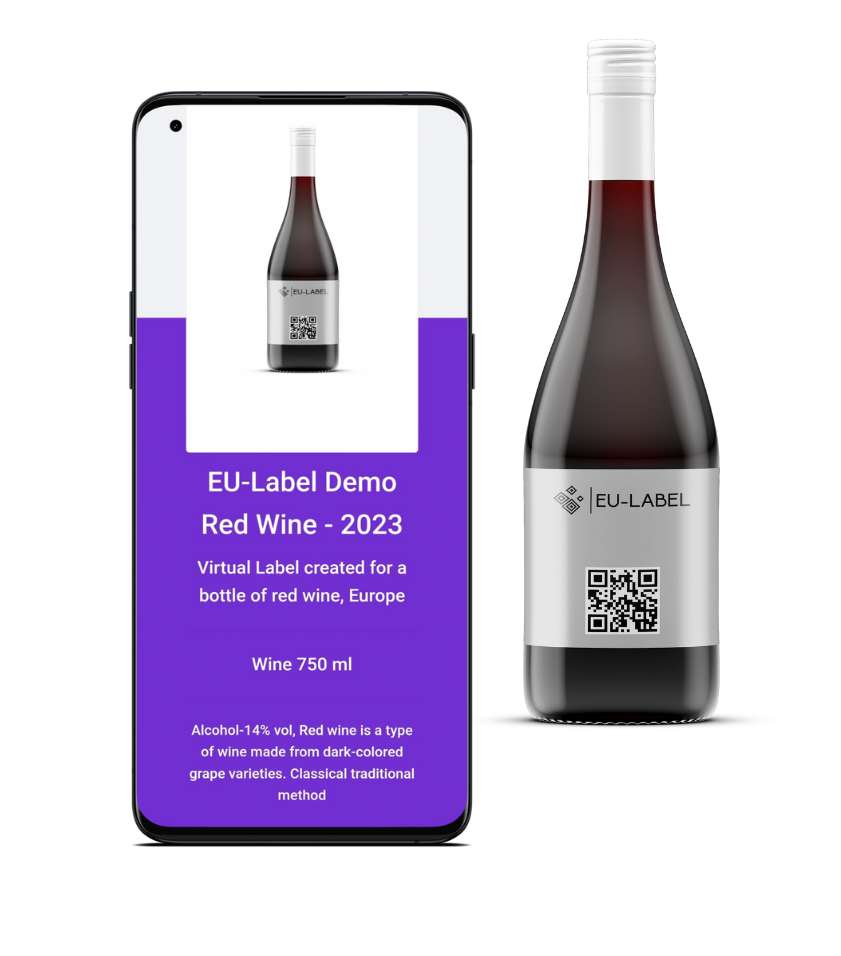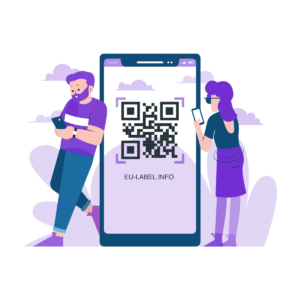04 Jan

Understanding QR Information
QR (Quick Response) codes store information that can be quickly accessed using a smartphone camera or a QR code scanner app. They can contain various types of data such as website links, contact information, product details, and more. QR codes are designed to provide a convenient and efficient way for consumers to access relevant information about a product or service. They are commonly used in marketing, advertising, product packaging, and ticketing. By scanning a QR code, consumers can instantly access the information embedded within the code, allowing them to make informed decisions and build trust with the brand.
Importance of Consumer Trust
Consumer trust is vital for businesses to thrive. With the increasing reliance on QR codes for instant access to information, ensuring transparency and reliability through QR information can significantly impact consumer trust. A recent study by Nielsen revealed that 59% of consumers are more likely to purchase products from brands they trust. Additionally, 71% of consumers said they would happy to pay more for products from a brand they trust. This highlights the importance of building and maintaining consumer trust in today’s market.
What is QR Information?
QR (Quick Response) Information is a type of barcode that stores information in a square pattern and can be scanned using a smartphone or a QR scanner. It can contain various types of data, such as website links, contact information, product details, and more. QR Information is often used to provide instant access to specific online content or to convey additional information about a product or service.
Benefits of QR Information in Building Consumer Trust
QR codes provide instant access to information, which builds transparency and trust with consumers. Some benefits of using QR information to build consumer trust include:
- Transparency: QR codes allow consumers to easily access detailed information about products or services, creating a sense of transparency in the business-customer relationship.
- Convenience: Consumers appreciate the convenience of accessing relevant information about a product or service by simply scanning a QR code, which can lead to increased trust in the brand.
- Authenticity: By enabling consumers to verify the authenticity of a product or service through QR information, businesses can build trust and credibility.
- Enhanced Engagement: QR codes can be used to provide engaging content, such as product videos, testimonials, or customer reviews, which can reinforce consumer trust in the brand.
Overall, incorporating QR information into your business strategy can be a powerful tool for building and maintaining consumer trust.
Utilizing QR Information to Provide Transparency
QR codes are an effective way to provide transparency to consumers. They can be used to share information about a product’s origin, production process, and environmental impact. This can help build trust with consumers as they can easily access and verify important information about the products they are purchasing. QR codes also provide a platform for brands to showcase their commitment to transparency and sustainability, which can enhance their reputation and appeal to socially conscious consumers.
How to Create QR Codes
To create a QR code, you can use a QR code generator, which is a simple and user-friendly tool. First, decide on the information you want to encode. This can be a website link, contact information, text, or any other relevant data. Then, input this information into the QR code generator, and it will create the QR code for you. Finally, you can download the QR code and use it wherever you need to share the information.
Implementing QR Information in Packaging and Marketing
QR codes can be incorporated into product packaging to provide consumers with easy access to product information, such as ingredients, expiration dates, and usage instructions. They can also be used in marketing materials to direct consumers to websites, promotional videos, or social media pages. By integrating QR information into packaging and marketing, businesses can enhance consumer trust by providing transparent and easily accessible information. This can help demonstrate a commitment to customer satisfaction and build brand credibility.
Examples of Successful QR Information Campaigns
QR codes have been used in successful marketing campaigns by various companies, leading to increased consumer engagement and trust. Here are some examples of successful QR information campaigns:
- Starbucks: Their QR code campaign allowed customers to scan the code to access nutritional and allergen information about their products, building trust and transparency with their customers.
- Coca-Cola: Used QR codes on their packaging to link consumers to interactive content, such as games and videos, creating an engaging and memorable experience for their customers.
- Nike: Integrated QR codes into their advertising to provide consumers with instant access to product information, videos, and special promotions, enhancing the overall customer experience.
By using QR codes effectively, these companies were able to drive consumer trust and engagement, showcasing the potential of QR information campaigns in building strong relationships with customers.
Ensuring Data Security and Privacy
In order to build and maintain consumer trust, it is crucial to prioritize data security and privacy when utilizing QR information. This involves implementing robust measures to safeguard sensitive consumer data, as well as adhering to relevant privacy regulations. It is essential to ensure that any personal or sensitive information collected through QR codes is encrypted and securely stored to minimize the risk of unauthorized access or misuse. Additionally, businesses must be transparent with consumers about how their information is being used and provide clear options for opting out of data collection if desired. Prioritizing data security and privacy not only protects consumers but also fosters a positive and trusting relationship between businesses and their clientele.
Summary and Next Steps
So, now that you’ve learned about the benefits of using QR codes to drive consumer trust, what’s next? Here are some steps you can take to start implementing QR information in your business:
- Identify areas in your business where QR codes can be used to provide valuable information to your customers, such as product details, expiration dates, or customer reviews.
- Research and choose a reliable QR code generator and management platform that aligns with your business needs.
- Design and create QR codes that are easy to scan and visually appealing.
- Test the QR codes to ensure they work correctly and provide the intended information.
- Integrate the QR codes into your marketing materials, product packaging, and other relevant touchpoints to enhance customer experience and build trust.
By applying these steps, you can begin leveraging QR information to foster consumer trust and enhance the overall experience for your customers
- Try EU-Label for free : https://app.eu-label.info/
- 3 Free E-Labels
- No credit card, no commitment required
Related:
11 January, 2024
20 October, 2023
09 April, 2024
25 March, 2024
21 January, 2025
Copyright © 2023
Owned by Semicolon
